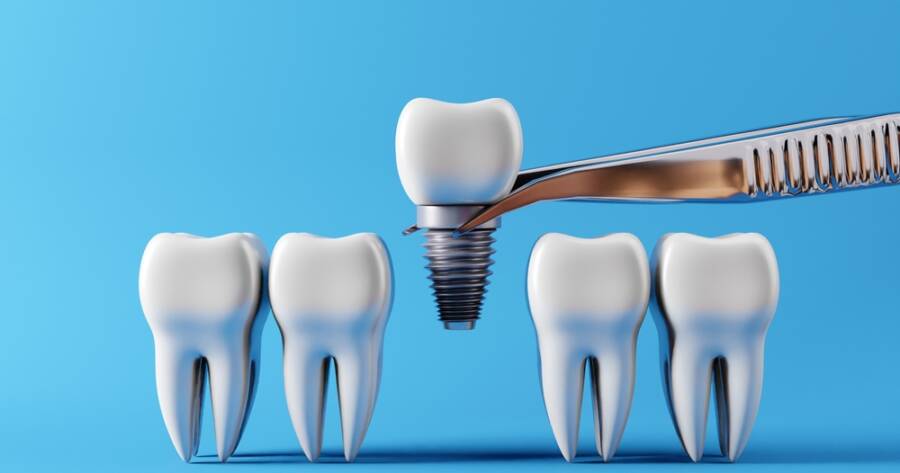Dental implants provide a lasting solution for missing teeth, restoring functionality and aesthetics. Choosing the right material is essential to meet specific needs in terms of appearance, strength, and compatibility with the body. Among the most popular dental implant materials are titanium, known for durability and bone integration; zirconia, offering a metal-free, tooth-colored alternative with good biocompatibility; and ceramic, valued for its natural look and resistance to corrosion. Each material brings unique benefits to suit individual preferences and health considerations.
1. Titanium Implants
Titanium is one of the most widely used materials for dental implants, known for its strength, durability, and compatibility with human tissue. Titanium implants are typically made in two parts, allowing the implant to fuse with the jawbone while the abutment (the piece attaching to the crown) can be positioned for optimal alignment. Titanium’s high strength and ability to withstand pressure make it an ideal choice for molar implants where durability is essential.
Titanium may also integrate well with bone, encouraging osseointegration, a process in which the implant and bone fuse together, creating a stable foundation. However, for those with metal allergies or sensitivities, titanium may not be ideal. For these patients, alternative materials like zirconia or ceramic could be a better choice.
2. Zirconia Implants
Zirconia is a metal-free material that offers both aesthetic and functional benefits. This biocompatible material is often preferred by individuals with sensitivities to metals, as it does not trigger allergic reactions. Unlike titanium, zirconia implants are typically made in a single piece, which can reduce potential complications from loose components and provide a seamless integration into the jawbone.
A significant advantage of zirconia is its color, which closely resembles natural teeth, making it a popular choice for visible front teeth. This aesthetic advantage means zirconia implants blend in well with surrounding teeth, avoiding the possibility of a metallic hue showing through the gum line. However, because zirconia is relatively new to the dental implant market, it lacks the long-term research of titanium, and its brittleness compared to titanium might limit its durability for high-pressure areas like molars.
3. Ceramic Implants
Ceramic implants are similar to zirconia in terms of aesthetics and metal-free composition, as they’re made from ceramic compounds. Ceramic implants provide a highly natural appearance, making them ideal for patients seeking a visually seamless implant. While ceramic implants are biocompatible and resistant to corrosion, they are slightly more brittle than titanium and may not be suited for all dental positions.
Additionally, ceramic implants might require a more precise surgical procedure due to their one-piece design, limiting their adjustability once positioned. Those considering ceramic implants for highly visible areas may find them to be a superior choice due to their close resemblance to natural enamel. However, like zirconia, ceramic implants might not be as well-suited for molar positions that undergo more pressure during chewing.
Choosing the Right Material for Your Dental Implant Needs
The choice of dental implant material often depends on individual needs, such as aesthetic preference, durability requirements, and sensitivities to metals. Titanium remains the top choice for strength and versatility, while zirconia and ceramic implants may be suitable for patients prioritizing aesthetics and biocompatibility. Consulting with a dental professional can help ensure the best material is chosen to meet both functional and aesthetic goals.
